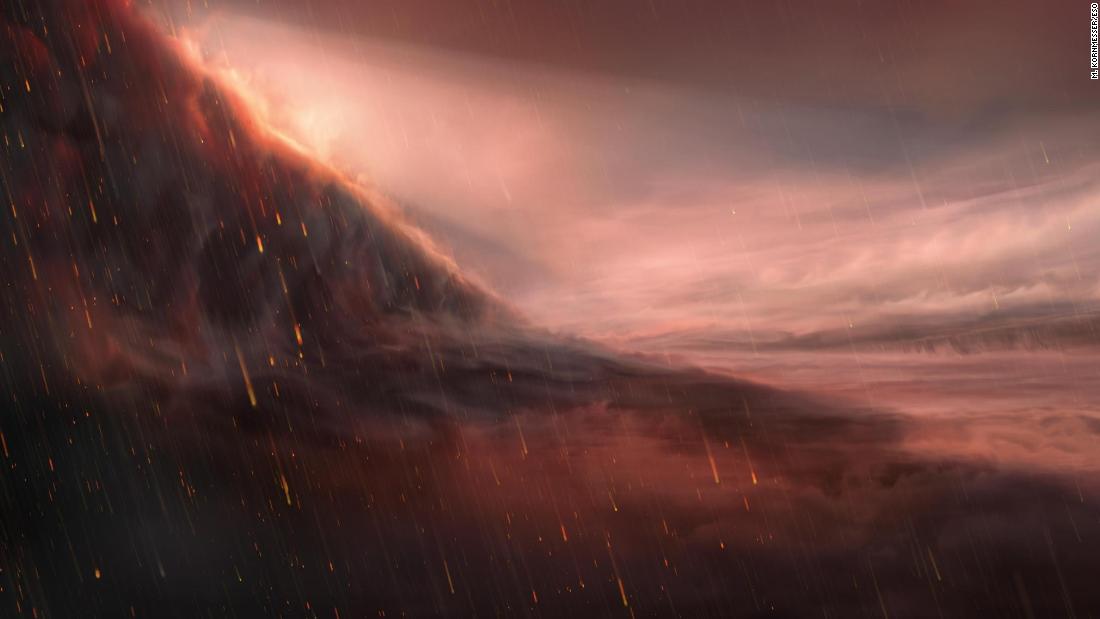(CNN) – Iron raindrops fall from the sky at night on this bright planet hundreds of light years away from Earth.
Now, researchers have discovered ionized sodium and calcium in the planet’s atmosphere, based on the observation of the Gemini North telescope at the summit of Mona Kia in Hawaii.
New discoveries suggest that the planet, called WASP-76b, is warmer than scientists expected.
The research is part of a Cornell University-led program called Exogems or Exoplanets with Journey Spectroscopy. The project brings together scientists to study the diversity of atmospheres on the exoplanets, planets located outside our solar system.
The results were released on September 28th Letters in Astronomical Physics And presented Tuesday at the annual meeting of the Planetary Science Division of the American Astronomical Society.
“As we perceive distant exoplanets in the distance, we create a complete picture of the true diversity of extraterrestrial worlds in the range of masses and temperatures. Jupiter is heavier than Jupiter for others not larger than Earth,” said Harold Danner, a co-author of the College of Arts and Sciences and astronaut at Cornell University. Said in the statement.
“With today’s telescopes and instruments, it is significant that we can already learn a lot about planets orbiting stars hundreds of miles away – their atmospheres, physical properties, the presence of clouds and large-scale wind patterns.”
Discovered in 2016, Jupiter’s tropical planet orbits a star in Pisces 640 light-years from Earth. Because of its proximity to the star, WASP-76b completes an orbit around it every 1.8 Earth days and absorbs thousands of times the amount of radiation the Earth receives from the Sun.
“We see a lot of calcium (in the WASP-76b atmosphere); this is a very strong feature,” said Emily Debert, co-author of the study and a PhD student at the University of Toronto. “The signature of this spectrum of ionized calcium may indicate that the exoplanet has a very strong upper atmosphere. Or the atmospheric temperature in the exoplanet is higher than we think.”
The planet is tidal, meaning that only one side of the planet always faces the star. It’s like our moon orbiting the earth. At what is known as the day side of the planet facing the star, the temperature exceeds 2,426 degrees Celsius.
Iron daytime temperatures, hot enough to convert molecules into atoms and metal into vapor, produce iron vapor. Fast winds carry it through the night, with relatively cold temperatures of up to 1,315 degrees Celsius.
Iron vapor condenses into clouds, forming a precipitate containing liquid iron, which forms the iron found in the atmosphere.
Carl Sagan’s partner at NASA’s Hubble Fellowship program and Jack Turner’s research partner in astronomy at Cornell University will eventually study 30 extrasolar planets.
“Our work, and that of other researchers, is paving the way for the exploration of the atmospheres of terrestrial worlds beyond our solar system,” Turner said.
Understanding the chemistry of an extrasolar atmosphere will help astronomers understand its weather, climate, and environment.
According to a previous study of the planet, “super-hot gas giant asteroids such as WASP-76b have daytime temperatures parallel to the surface of cold stars.
Previous examples of these extremely hot extraterrestrials include KELT-9b, WASP-121b, and WASP-12b. Other types of precipitation that are unusual for other planets, such as the evil winds of HD 189733 b, glass-like silicates around the planet, and diamond rain on Neptune.


:quality(85)/cloudfront-us-east-1.images.arcpublishing.com/infobae/SMPW7M5BQFERBOQUPJXKCOKARY.jpg)
:quality(85)/cloudfront-us-east-1.images.arcpublishing.com/infobae/NP5NEZXMZFGNLBHNEQJHPJVMKM.jpg)

:quality(85)/cloudfront-us-east-1.images.arcpublishing.com/infobae/X7DZAL3I4REJTKPZ4Y4DYBHFMI.jpg)